After the Athenians and Plataians had camped in the woods near Mount Agrieliki for about 5 days, hoping the Spartans would arrive, the Persian army advanced into the plain. We don't know exactly where the battle took place, but it seems likely it was in the middle as shown in the map.
Two Big Problems
The trumpets sounded and the hoplites took formation in a long battle line. The phalanx was normally 8 ranks deep. Miltiades, now in overall command, knew that because the Persian army was much bigger, the Greeks would be outflanked. This was a big problem. If an enemy outflanked you (see diagram below), they could attack the side or rear of your phalanx, which could not defend itself properly. Phalanxes were very effective going forwards, but not in any other direction!
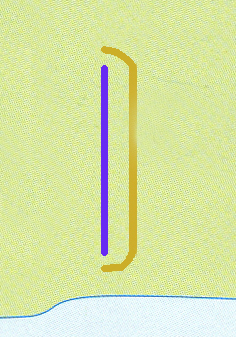
The other big problem was that even before the two armies met face to face, the Persian archers would fire thousands of arrows at them. The Greek shields were quite effective at deflecting these arrows, but still, there was a big danger.
Miltiades solved the arrow problem very simply - he told the hoplites to run, once they got in arrow range. This meant they got to the battle line more quickly and so there were fewer casualties. Of course it meant the soldiers would be a bit worn out - they were each carrying about 25kg of gear! However, most hoplites were very fit from training in the gym. There was even a special race for athletes - the hoplite race - in which men ran wearing helmets and shields.
Still, it was a hot day, and the run can't have helped. And once they arrived at the Persian line they had to very quickly get into a tight phalanx.
The second problem was more difficult. What could Miltiades do to make sure the Greek battle line was not outflanked - and of course make sure the Greeks won the battle? Below we look at the options.

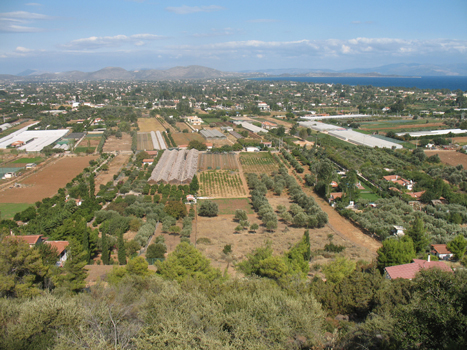
A view of the plain of Marathon today, from the lower slopes of Mount Agrieliki. The battle took place somewhere in the middle. The area of the Persian camp is just visible in the distance where the beach curves.
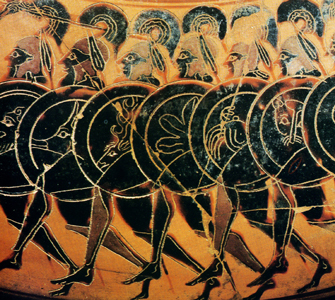
Hoplites running
Thin the Ranks
Miltiades had to thin the ranks. In order for the Greek battle front to match the Persians, the phalanx could not be 8 men deep all the way along. But where to thin? What do you think?
The Greeks knew that the strongest enemy troops were in the centre - the Persians themselves with their spears, and the Sakai with their battle axes. So how about keeping the Greek centre strong, and thinning on the flanks?
The pictures show what would probably have happened.
Phase 1
The Greeks thin down to four ranks, on both the left and right flanks. Now the Persians are much stronger on each flank. The Greeks in the centre are reasonably well-matched to the strong Persian forces. Hoplites overall were better warriors and had better weapons and armour than the Persians. What do you think would happen next?

Phase 2
The Greeks on each flank would be pushed back. Once they were defeated like this it was a rout - many of them would drop their shields and flee. Lots would be killed, as it was much easier to kill an enemy who showed you his back.
And then...
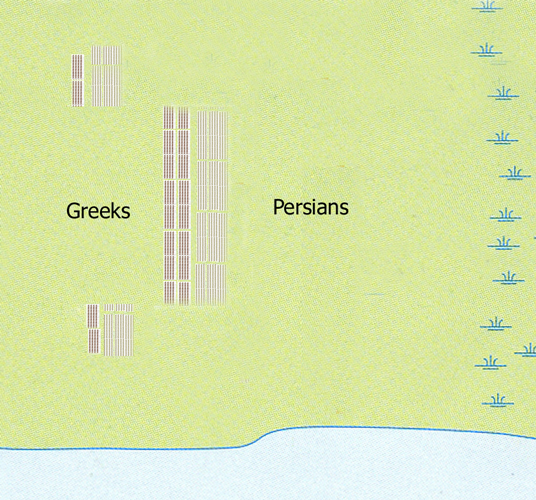
Finally, the Persians who had chased after the Greek flanks could turn and attack the remaining Greeks from behind. Any ancient army surrounded like this would be destroyed.
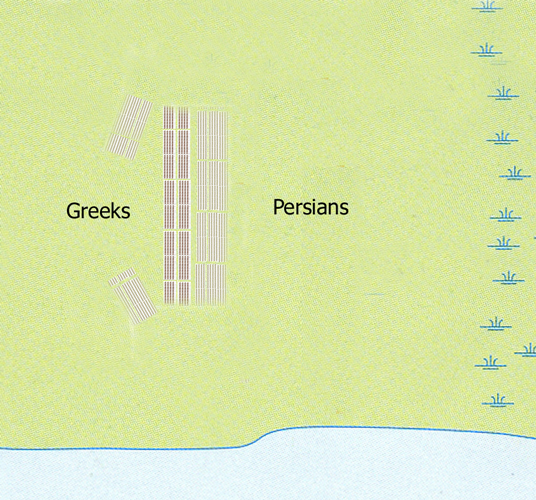
In fact Miltiades ordered the army to thin in the middle, down to 4 ranks (see diagram right).
Now we shall see the stages of the battle as it actually unfolded. As the Greeks approached, a blood sacrifice was made - a goat's throat was cut as an offering to the gods. The Greeks promised the goddess Artemis that if they won the battle each year they would sacrifice one goat for every Persian killed.
Phase 1
When they reached arrow range, the army ran, a few hundred metres. And then they crashed into the enemy. Imagine the fury, the terror, heat, the exhaustion! Sharp iron spear tips everywhere, shields crashing into shields, shouts of anger and encouragement...not a pretty scene.
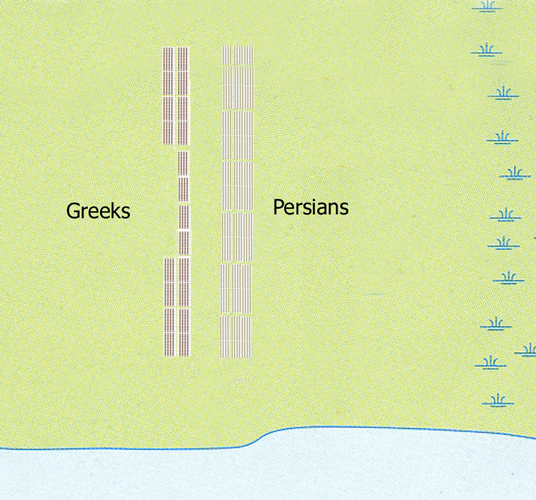
The armies fought 'for a long time' according to Herodotus. The first sign of progress came when the Greek left flank - where the Plataians were - defeated the Persian right flank. The Greeks chased their enemies into the Great Marsh, where many drowned or were cut down. Many also ran back to their ships which began to weigh anchor and leave.
This was the 'turning point' of the battle - the first point at which the Greeks began to win. Greek custom was to raise a trophy at the turning point. In fact the word trophy comes from the Greek tropaion - which means turning point.
Usually arms like helmet, sword, shield etc. were fixed to a tree stump as a trophy. After Marathon the Athenians raised a white column at the turning point. A replica of this column has been built in modern times at the same point (see photo on the next page, After the Battle).
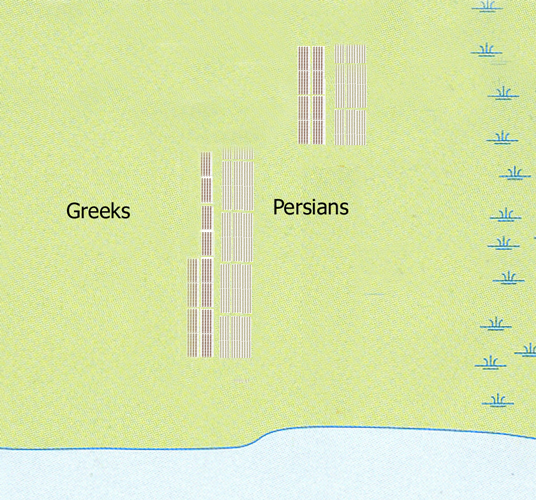
In the centre the Athenians were heavily outnumbered. For a long time they fought bravely, but were hard pressed and eventually gave way, retreating back towards the Greek camp.
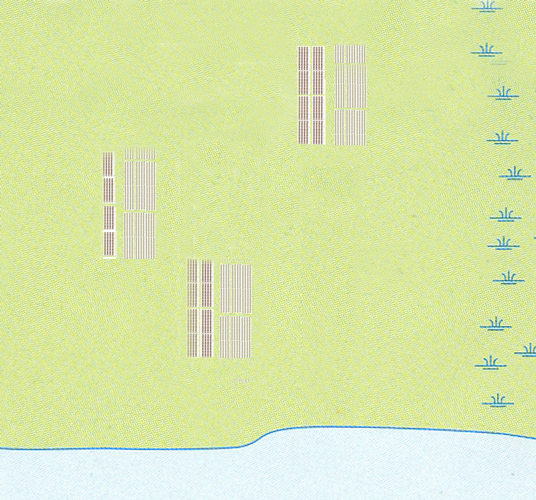
At some point, the Greek right flank was victorious, and chased the Persians back towards their ships. Many Greeks probably wanted to give chase all the way. But their comrades in the centre needed help.
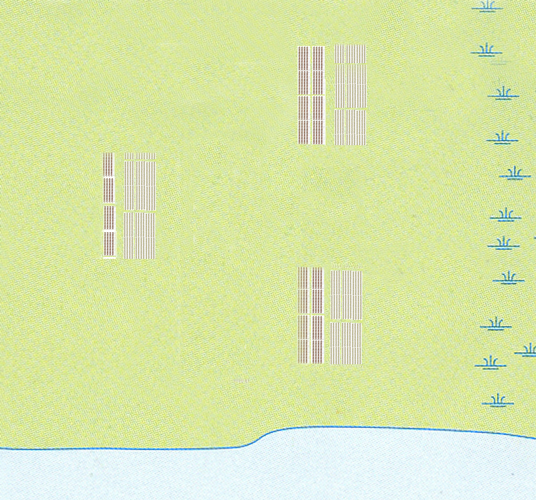
It is not known if Miltiades had a definite plan for the final phase of the battle, and some historians think that Greek armies at that time had not developed such clever strategies. However, there must have been a reason for him to thin the army in the centre, and it seems to me he must have hoped that what did happen, would happen.
The Greeks on the flanks, who had beaten their enemies, now turned around and attacked the powerful Persian centre from behind. This would have taken a lot of organisation, and presumably commanders had to shout and urge their soldiers to give up chasing their defeated enemies and reform their phalanx. But it seems that is what happened. The Persians were now surrounded and soundly defeated.
Many Persians managed to escape to their ships, and now the Greeks did pursue them to the beach where the ships were hastily leaving. There was a lot of bloody fighting on the beach, and many Persian warriors were slain while trying to climb into their ships. Some of the Greek commanders were killed here, including Kallimachos. Kynegeiros, the brother of the playwright Aeschylus, died after grabbing a ship with his bare hands; someone cut off his hand and he bled to death.
But the battle was won. It was all over.
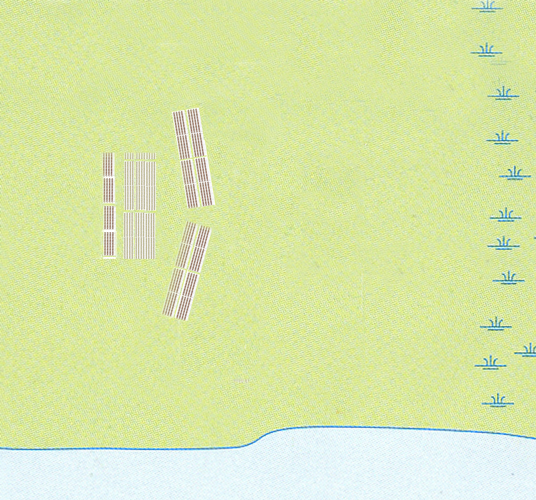
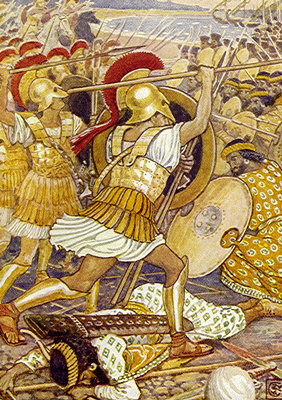
An artist's impression of the battle
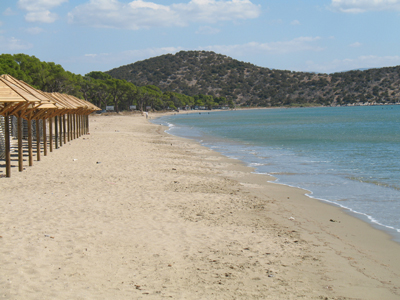
Schoenias beach - where the Persian ships were anchored.
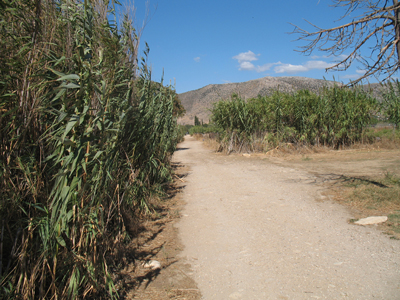
The approximate location of the battle line, today.